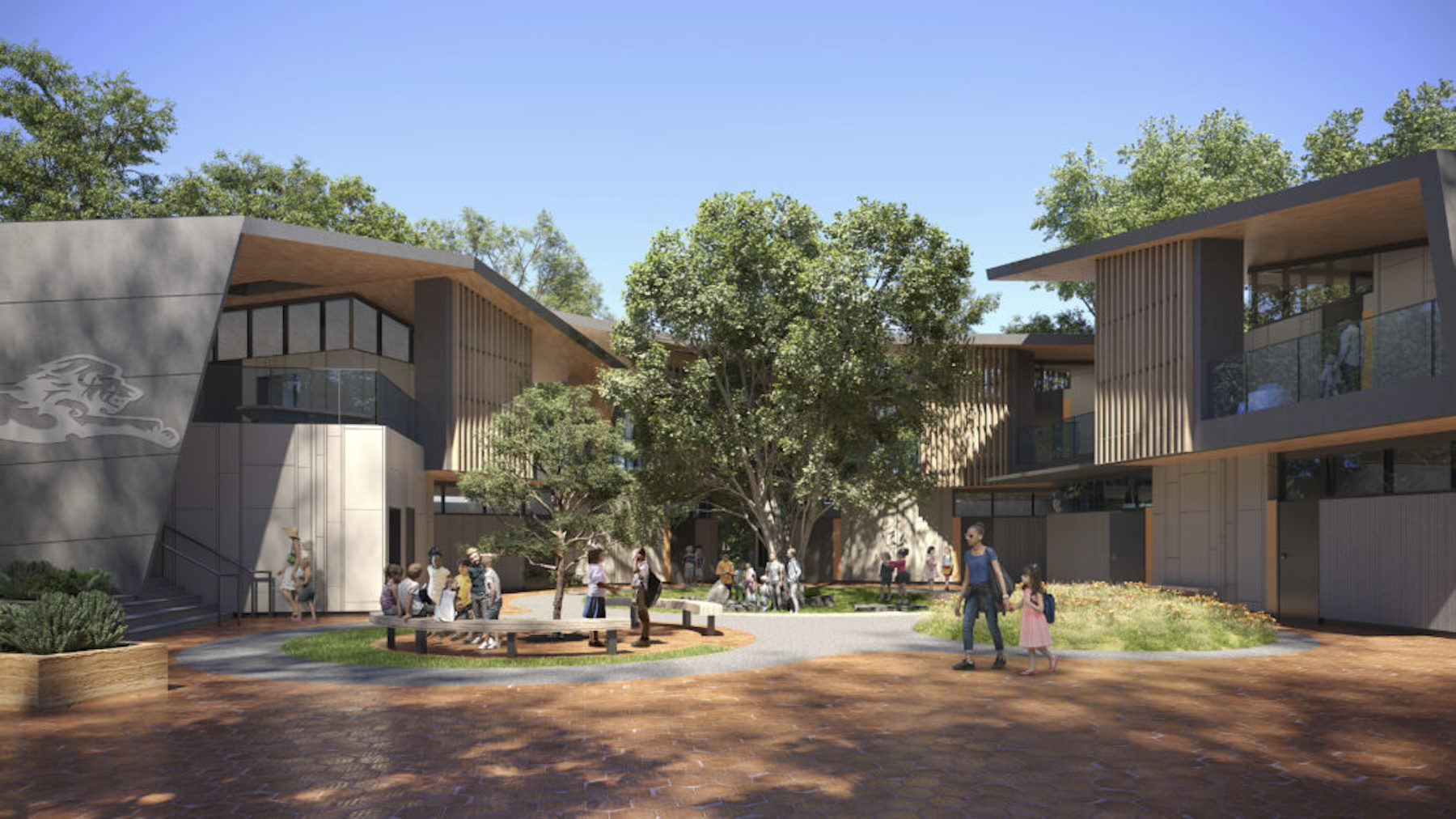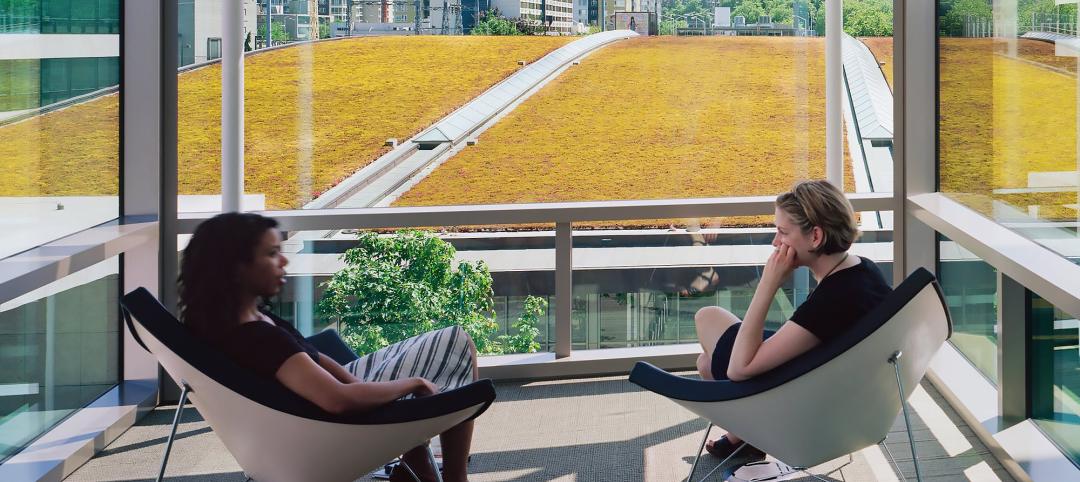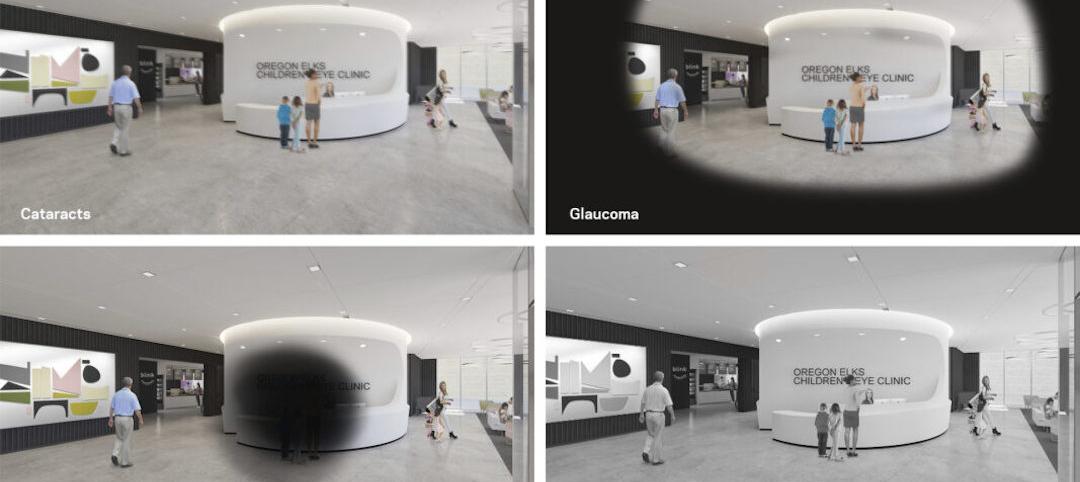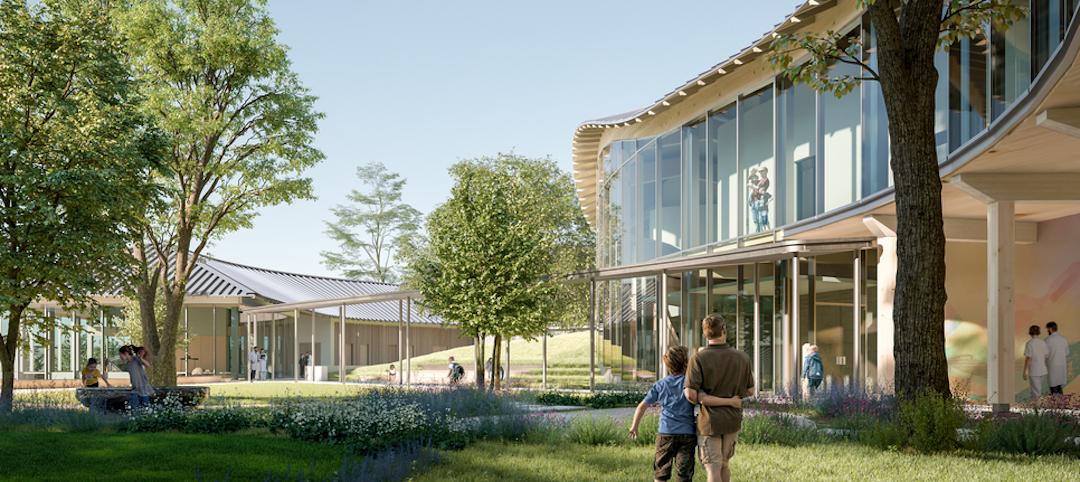The benefits of fresh air have long been tied to health and productivity. But as we continue to examine the built environment’s role in climate change, its implications for reducing a building’s carbon footprint are increasingly important. In this post, the fourth in a series about healthy buildings (the first three posts covered light, noise and access to nature), we illustrate how solutions like operable windows and breathable facade systems are key to maintaining a healthy indoor environment and reducing energy use in buildings. This post was co-authored by Peter Alspach and Eric Phillips.
Long before the pandemic, studies indicated the correlation between indoor air quality and health. Lower levels of outdoor air supply have been associated with increased sick leave among employees, while improved ventilation corresponds with higher test scores and decreased school absences among students. Covid-19 further underscores the importance of proper ventilation and air quality in preventing disease transmission since it has been shown that the virus spreads more rapidly in poorly ventilated spaces. And while natural ventilation has positive implications for health and cognition, it can also reduce a building’s carbon footprint in lieu of conventional mechanical ventilation and air-conditioning systems.
While few climates can rely completely on natural ventilation, many climates have significant periods of the year where natural ventilation is an effective and low-energy solution to providing increased ventilation rates and space conditioning. Designing for mixed-mode buildings—buildings that can operate mechanically or naturally—allows for the best of both worlds in a changing climate.
Healthy air drives performance—of people and buildings
The air we breathe is affected by hundreds of indoor and outdoor pollutants, and the baseline for what is considered healthy air—as defined by minimum air quality standards—is below what is ideal for performance. Good indoor air quality positively affects creativity and cognition, while even minor indoor pollutants can inhibit our ability to concentrate and process information. That’s because cognitive performance increases significantly when indoor CO2 levels are lower than those that result from current ventilation standards.
Natural ventilation can provide increased levels of outside air to a space relative to code. Bringing in two to four times as much outdoor air as required by code not only increases performance and reduces the risk of viral transmission, it also decreases energy use and operational carbon emissions. For example, in a Tokyo University of Science study on the energy saving efficiency of a natural ventilation strategy in a multi-story school, researchers analyzed ventilation and cooling load reductions based on the opening and closing of several windows. The results showed that the natural ventilation strategy could effectively establish required indoor conditions and compared with the mechanical ventilation system, could decrease energy consumption by approximately 30%.
To improve ventilation by increasing air exchange rates, features like operable windows or garage doors—which open to the outside and can be used for natural ventilation or to create dynamic indoor-outdoor spaces—can be incorporated into a building’s design. Classrooms at the new lower school campus of the Westmark School in Encino, CA—which is targeting LEED Gold certification as well as International Living Future Institute Zero Carbon certification—feature oversized doors that can be opened to create regular moments of engagement with the powerful benefits of outdoor learning and reduce the need for traditional mechanical systems.
Natural ventilation increases resiliency
Natural ventilation’s benefits extend beyond reducing disease transmission and carbon emissions. It also allows our buildings to remain habitable, even under power outages and extreme weather conditions. Hospitals are now beginning to re-examine operable windows for patient rooms, even if only to be used in an emergency. And during Covid, some hospitals were able to use operable windows to allow for retrofits of increased isolation and higher ventilation rates.
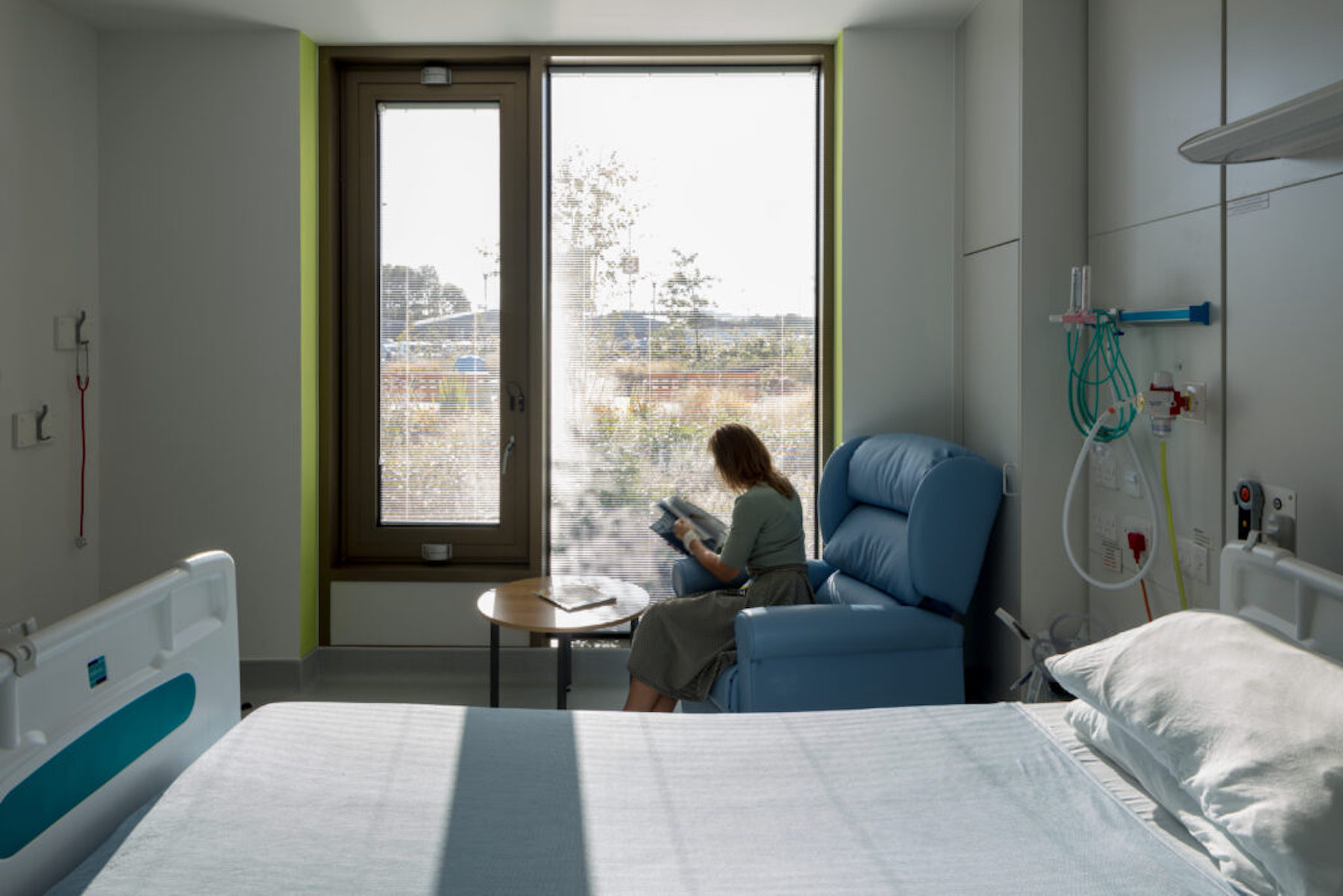
A breathable facade design takes the idea of resiliency even further. This envelope-first approach prioritizes energy efficiency and comfort simultaneously and enables thermal autonomy—a building’s ability to maintain its thermal environment if power is compromised. Thermal autonomy is critical during events like heat waves, when sealed environments such as high-rise multi-family residences can become dangerous, especially for elderly or otherwise compromised populations.
Thermal autonomy is also important when quantifying energy consumption, since it measures how much of the available ambient energy resources a building can harness. Currently, researchers at UC Berkeley are working to create an integrated building design process that combines the assessment of three internal air quality factors—thermal, luminous and ventilation autonomy—into a single workflow to help predict building performance.
These types of porous building solutions are not limited only to new buildings. Many pre-war buildings already feature operable windows, an added benefit when renovating or retrofitting. Building additions or portions of new constructions can also be designed to incorporate natural ventilation strategies. For example, the atrium at the Bill & Melinda Gates Foundation in Seattle, WA—which serves as the central gathering place for the campus and can accommodate up to 1,000 people—features operable windows while the connected buildings are sealed, allowing the adjacent buildings to reap the benefits of natural ventilation in a targeted biophilic space.

Finally, to effectively harness the benefits of natural ventilation, it is important to focus not just on building functionality, but also building form. Designing to allow as many spaces as possible to exist in proximity to operable windows, for example, has synergies not only with ventilation but also daylight access—another highly critical aspect of human health and wellness in the indoor environment.
Avoiding pollution and increased energy use
It is important to note that while the benefits of natural ventilation are many, there is also the potential for noise and air pollution, and increased energy use that can counteract conservation efforts, if not implemented correctly.
Periods of high outdoor air pollution—wildfire smoke and pollen are the two most common issues, as well as noise pollution from construction or traffic—are a concern when relying primarily on natural ventilation. Before implementing operable windows, a local air quality risk review is critical, and some locations may wish to continuously monitor local air quality and signal building users when ambient air quality is poor. The ability to run “mixed mode” (switching back and forth between operable windows and mechanical ventilation) and having a well-designed mechanical ventilation system in place during periods of pollution is also important. For example, persistent wildfires in the areas surrounding the Westmark School often negatively impact air quality, so individual classroom spaces feature oversized doors that can open and close. When the doors are closed, students still receive the benefits of daylight and nature without breathing contaminated air.
Increased energy use when operable windows are open can be detrimental to energy conservation—like driving a car with the heat on and the windows down—however, there are ways to incorporate operable windows while also mitigating the energy penalty. Automation or mechanization of windows or select windows within a space that serve as a signal for other manually controlled windows can help alleviate this problem. Window switches that signal open windows to maintenance staff and that can also prevent heating and cooling when the windows are open are another solution. Signaling systems like a red or green light are useful if tuned correctly and lastly, use of windows in spaces that have greater ownership—such as residences or private offices—have a lower likelihood of misuse.
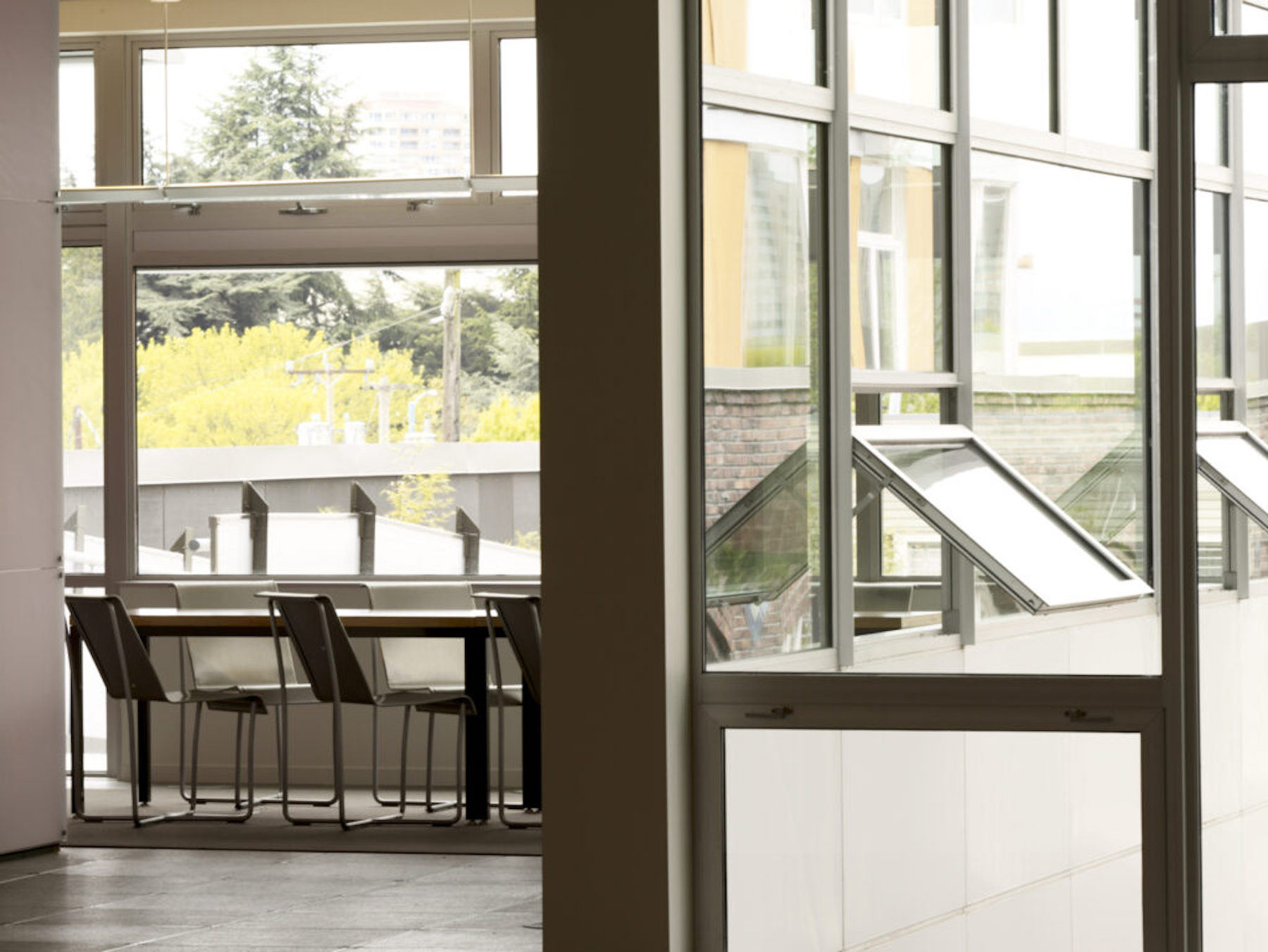
Finally, changes in climate can also result in impacts to local air quality, increasing ground-level ozone and particulate air pollution. CO2 concentrations in outdoor air are rising and projected to increase due to continued emissions, exacerbating current challenges with high indoor CO2 levels, especially with mechanical systems where the ability to increase ventilation rates is limited. Operable windows provide a large jump in outside ventilation, which can help to maintain indoor CO2 levels, even as outdoor levels rise.
In conclusion
Because of the potential benefits, natural ventilation is increasingly being proposed as a means of saving energy and improving indoor air quality. Design solutions like operable windows and breathable facades that can be applied on a variety of building types and scales improve air quality and reduce carbon emissions in buildings while providing added benefits for the health, performance and safety of the people who occupy them.
More from Author
NBBJ | Oct 3, 2024
4 ways AI impacts building design beyond dramatic imagery
Kristen Forward, Design Technology Futures Leader, NBBJ, shows four ways the firm is using AI to generate value for its clients.
NBBJ | Jun 13, 2024
4 ways to transform old buildings into modern assets
As cities grow, their office inventories remain largely stagnant. Yet despite changes to the market—including the impact of hybrid work—opportunities still exist. Enter: “Midlife Metamorphosis.”
NBBJ | May 10, 2024
Nature as the city: Why it’s time for a new framework to guide development
NBBJ leaders Jonathan Ward and Margaret Montgomery explore five inspirational ideas they are actively integrating into projects to ensure more healthy, natural cities.
NBBJ | Oct 18, 2023
6 ways to integrate nature into the workplace
Integrating nature into the workplace is critical to the well-being of employees, teams and organizations. Yet despite its many benefits, incorporating nature in the built environment remains a challenge.
NBBJ | May 8, 2023
3 ways computational tools empower better decision-making
NBBJ explores three opportunities for the use of computational tools in urban planning projects.
NBBJ | Jan 17, 2023
Why the auto industry is key to designing healthier, more comfortable buildings
Peter Alspach of NBBJ shares how workplaces can benefit from a few automotive industry techniques.
NBBJ | Feb 11, 2022
How computer simulations of vision loss create more empathetic buildings for the visually impaired
Here is a look at four challenges identified from our research and how the design responds accordingly.
NBBJ | Jan 7, 2022
Supporting hope and healing
Five research-driven design strategies for pediatric behavioral health environments.
NBBJ | Nov 23, 2021
Why vertical hospitals might be the next frontier in healthcare design
In this article, we’ll explore the opportunities and challenges of high-rise hospital design, as well as the main ideas and themes we considered when designing the new medical facility for the heart of London.
NBBJ | Aug 18, 2021
20 years after developing the first open core hospital design here is what the firm has learned
Hospitals have traditionally used a “racetrack” layout, which accommodates patient rooms around the exterior and situates work areas and offstage functions in a central block.

